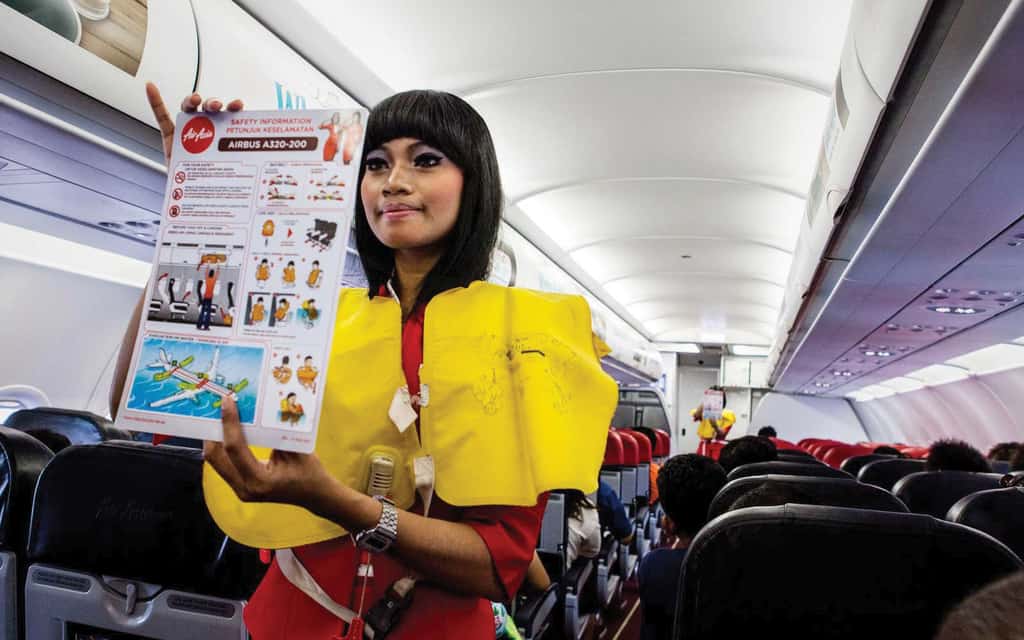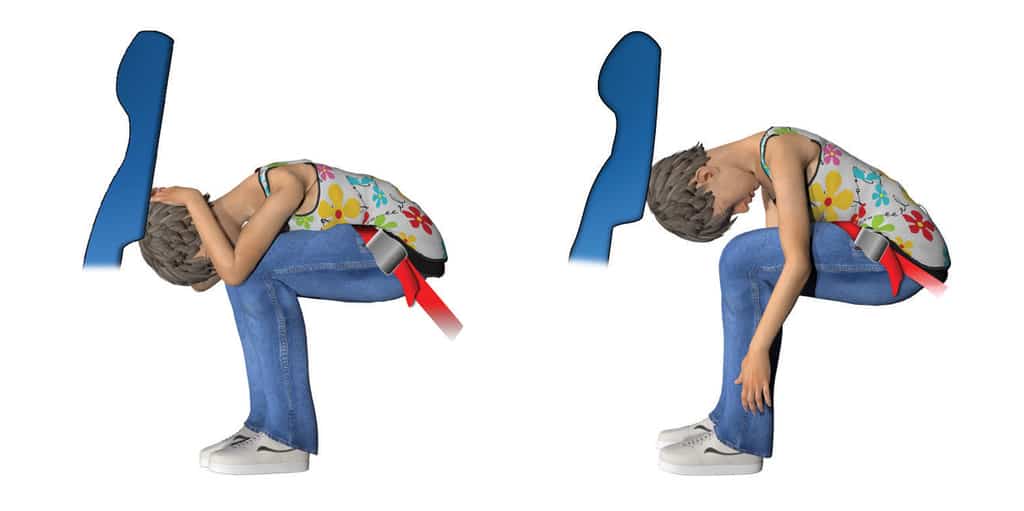Accident investigations have shown that deficiencies and inaccuracies in safety information briefings, signs, placards and markings can negatively impact passenger survival rates. Well-informed, knowledgeable passengers have a better chance of surviving a life-threatening situation that may occur on board an aircraft.
ICAO’s new Manual on Information and Instructions for Passenger Safety (Doc 10086), developed by the ICAO Cabin Safety Group (ICSG), provides guidance material to ensure the necessary safety-related information and instructions are provided to passengers to enhance their chances of survival in the event of an accident.
Survivability in an aircraft accident is dependent on multiple factors. Certification standards for crashworthiness and ditching are designed to enhance passenger survivability by maintaining the integrity of the aircraft’s structure and providing access to emergency exits so that occupants can escape. Cabin crew evacuation procedures further improve survivability, by enabling crew members to direct passengers and assist them in quickly leaving the aircraft. Passengers’ survival rates are improved when they are informed about the correct use of equipment, such as seatbelts, and the actions they should take in the event of an emergency, such as how to adopt the “brace-for-impact” position.
This life-saving information is relayed to passengers via passenger safety briefing cards, videos, signs, placards, emergency lighting systems and verbal briefings. ICAO provisions in Annex 6 – Operation of Aircraft, Part I – International Commercial Air Transport – Aeroplanes cover the safety-related information and instructions that an operator should provide to passengers. The goal of these provisions is to require operators to communicate specific, accurate information and instructions to passengers, to facilitate understanding.

What do passengers need to know to increase their chances of survival?
To improve passengers’ safety and enhance their reaction and survival in the event of an emergency, operators are required to provide the necessary information to passengers. A means of doing this is the pre-flight safety demonstration. The safety demonstration is conducted by cabin crew or it may be a video developed by the operator and presented to passengers prior to take-off. This demonstration includes key items that passengers need to know to increase their chances of survival in an accident, such as the use of seat belts, the location of emergency exits, emergency escape path lighting and exit signs, the location and use of oxygen masks and life jackets, as well as how to brace for impact.
In addition, certain passengers may require personalized individual briefings, adapted to their specific needs. These passengers include, but are not limited to persons travelling with infants, unaccompanied children, persons with disabilities, persons with mobility impairments, and persons on stretchers. An individual safety briefing for these passengers should include any information contained in the safety demonstration and the passenger safety briefing card which the passenger would not be able to receive otherwise (for example, if the passenger is visually impaired) and is necessary for the safety of that person during the flight.
What languages should the cabin crew speak on board?
Information provided via safety briefings, announcements and the safety demonstration should be transmitted in the language of the operator and in English. On international flights, operators should use English, the official language(s) of the State of departure and the State of destination for safety briefings, to cover the largest percentage of possible passengers on board.

Moving toward pictograms
An effective way to overcome language barriers is the use of pictograms. Pictograms are the recommended media type for signs, markings and placards (versus text content). They can help passengers understand the location of live-saving equipment and provide information on actions to take during an emergency, such as how to open an exit. To promote global harmonization and understanding of information displayed in aircraft cabins, Airbus launched a project to redesign all its placards using only pictograms.
Who gets to sit at an emergency exit row?
Space is a luxury on board commercial aircraft, particularly in economy-class cabins. Therefore, passengers will often try to obtain a seat in an emergency exit row. Since this row has direct access to an emergency exit, the distance between seats in this row is bigger than other rows.
However, not all passengers should be allowed to sit at an emergency exit row. Exits such as those at the over-wing are referred to as unstaffed exits (or self-help exits). This means that these emergency exits are not assigned to cabin crew members. Passengers are expected to open them in an evacuation. Passengers should meet certain criteria to be eligible to occupy seats located in an emergency exit row. Such criteria are necessary so that a passenger’s presence at an emergency exit row does not adversely affect the safety of other occupants during an evacuation, or result in harm to themselves. These criteria include, but are not limited to:
■ Being physically capable of operating the emergency exit;
■ Capable of understanding the printed and spoken instructions;
■ Able to visually determine if the exit is safe to open (e.g. that there is no fire outside); and
■ Have sufficient mobility, strength and dexterity to reach, operate and stow, or dispose of, the exit hatch.
In an evacuation, passengers will often panic and rush to exits. It is important to set a minimum age for passengers who can sit at these exits. Infants and small children should be forbidden from occupying these seats as they may be injured by other passengers trying to escape the aircraft.

How to brace for impact?
Occupant survivability is linked to three phases of an accident:
1. Surviving the crash sequence (i.e. the impact forces, consequent deceleration, and secondary impacts)
2. Evacuating the aircraft; and
3. Surviving the post-evacuation environment (e.g. sea, jungle, mountainous region).
Occupants who are seriously injured during the crash sequence may be unable to evacuate and may suffer fatal injuries as a result (e.g. if occupants are unconscious or have a broken leg, and the aircraft is on fire). To enable the physical evacuation of the aircraft, it is important that passengers take actions to minimize the potential for injuries during the crash sequence.
One action that passengers can take to contribute to their survival is to assume an appropriate “brace-for-impact” position, commonly referred to as the brace position. This is an action where a person pre-positions his/her body against whatever he/she is most likely to be thrown against, and which may significantly reduce injuries sustained.
Since the 1960s, extensive research has been conducted on brace positions, using anthropomorphic dummies in a series of sled- impact tests. The aim of such research is to determine the most beneficial passenger brace position in forward-facing economy type aircraft seats. Research shows a reduction of secondary impact by adopting a brace position.
Although extensive research has been conducted; no single brace position has been determined. There is great variation in passenger characteristics and abilities, in-seat class characteristics, seat pitch, and direction of travel (some seats face forward, others are angled or face rearwards). Results from internationally recognized research studies on the brace positions were used to determine the recommended brace positions presented in Doc 10086. ICAO worked closely with the International Board for Research into Aircraft Crash Evaluation (IBRACE), a group composed of subject matter experts involved in the testing of brace positions, either from an engineering or medical perspective.
“Leave everything”
Many evacuations have shown a tendency for passengers to attempt to retrieve their belongings in an evacuation – despite cabin crew members repeatedly instructing them to abandon carry-on baggage.
Passengers are unaware of the risks associated with taking their baggage during an evacuation. The consequences could include impeding an orderly and timely evacuation, damaging an evacuation slide, and increasing the risk of injury. As passengers insist on taking their belongings with them, cabin crew are faced with passenger management and crowd control issues in an evacuation. The new ICAO manual contains recommendations to manage carry-on baggage issues in the event of an evacuation. These include changes to the operator’s policies and procedures, training for cabin and ground crew, and passenger education.
The ICAO Manual on Information and Instructions for Passenger Safety (Doc 10086) is now available to States in English on the ICAO-NET at http://portal.icao.int/. Additional information can be obtained here on the ICAO Cabin Safety Website.
About the Author
Martin Maurino is the Safety, Efficiency and Operations Officer at ICAO who heads the ICAO Cabin Safety Programme. Before joining ICAO, he held safety analysis and safety management roles at Transport Canada and the International Air Transport Association (IATA). Martin began his career in aviation as a cabin crew member at Air Canada.

 About the Author
About the Author